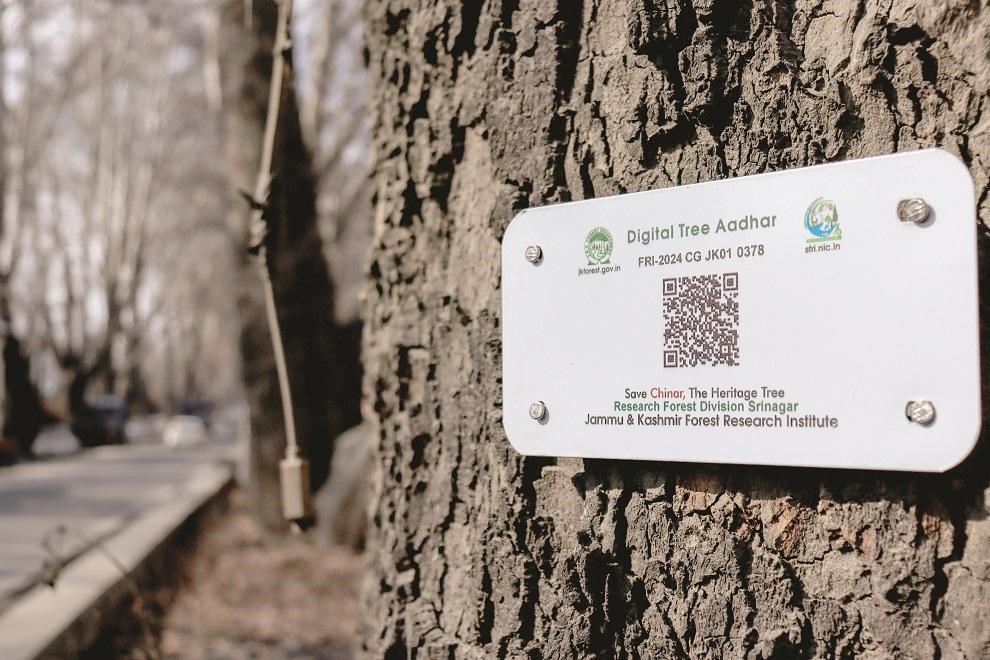J&K Assigns Aadhaar to Preserve Iconic Chinars
Why in the news?
The Jammu & Kashmir government launched a census to conserve Chinar trees by assigning unique “Tree Aadhaar” numbers, geo-tagging, and QR coding them, ensuring preservation of this culturally and ecologically significant species.
About the Conservation Project
- Jammu & Kashmir government launched a census to conserve the dwindling Chinar population.
- Each tree is assigned a unique “Tree Aadhaar” number for tracking its health and status.
- The census has geo-tagged 28,560 trees, with the estimated total being around 32,000–33,000 in the region.
- Metallic QR codes are being installed on trees to store details like location, age, height, girth, and health across 25 parameters.
Challenges and Conservation Efforts
- Chinar trees are protected by law, but unauthorized cutting
- The initiative ensures government monitoring even for trees on private property.
- Coordinated by Syed Tariq, the project aims to preserve heritage trees and maintain their ecological and cultural legacy.
Key points :Chinar Trees:
- The Chinar tree (Platanus orientalis), resembling a maple, has cultural and ecological importance in Kashmir.
- Known locally as “Buen” or “Booyn”, the tree’s leaves turn crimson and gold in autumn, attracting tourists.
- Chinar motifs feature prominently in Kashmiri art, including papier-mâché, embroidery, carpets, and wood carvings.
- The tree, which takes 30-50 years to mature and can grow up to 30 meters tall, thrives in cold, water-abundant regions.
By geo-tagging and assigning Aadhaar to Chinar trees, J&K aims to preserve this iconic species for future generations.
Sources Referred:
PIB, The Hindu, Indian Express, Hindustan Times





